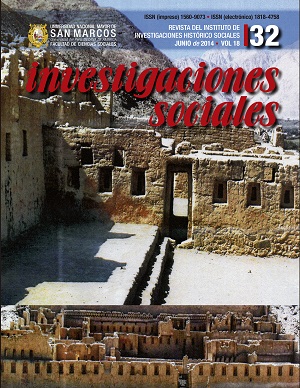Geomorphology of the Marañon central river (sector of Balsas)
DOI:
https://doi.org/10.15381/is.v18i32.10948Keywords:
Geomorphology Marañon, Geomorphology Balsas, Geomorphology Chadín.Abstract
The study area presents varied geomorphological features. Chaired by a major natural factor which is the Marañon River, which, tailoring and building its own valley, at the expense of the nature of the lithology and opposing tectonic forces, presents peculiar and varied spectacular landforms and geomorphological processes. Simultaneously and in an interrelated way, the same has happened in its numerous tributaries, as much to the right margin as to the left margin. ose make up as a set, a hierarchical network of valleys proportionate to their size basin, adjusted to the main axis, covering a vast hydrographic network that with its basins in this sector, ll much of the departments of Amazonas to the East and Cajamarca to the West. e Marañon River has built its main axis tting its bed, just as it has done with its own peculiarities, for example some other large Peruvian rivers are embedded in large longitudinal valleys, such as the Ucayali and Huallaga rivers. e Marañon River with a dominant course S-N, cuts meridionally to the exures of the Andes along their anticlinal axes, to depths exceeding 2 000m and often reaching the Peruvian bedrock has created dramatic landforms and complex morphodynamic processes whose range has been favored by the eventual presence of powerful weather conditions by factors of latitude, exposure, topography, human actions, etc., that as it will be seen, mark important distinctions in the regional geomorphological dynamics we propose to classify, describe and explain.Downloads
Published
Issue
Section
License
Copyright (c) 2014 David Mansueto Durand Castro

This work is licensed under a Creative Commons Attribution-NonCommercial-ShareAlike 4.0 International License.
AUTHORS RETAIN THEIR RIGHTS:
a. Authors retain their trade mark rights and patent, and also on any process or procedure described in the article.
b. Authors retain their right to share, copy, distribute, perform and publicly communicate their article (eg, to place their article in an institutional repository or publish it in a book), with an acknowledgment of its initial publication in Investigaciones Sociales.
c. Authors retain theirs right to make a subsequent publication of their work, to use the article or any part thereof (eg a compilation of his papers, lecture notes, thesis, or a book), always indicating the source of publication (the originator of the work, journal, volume, number and date).






